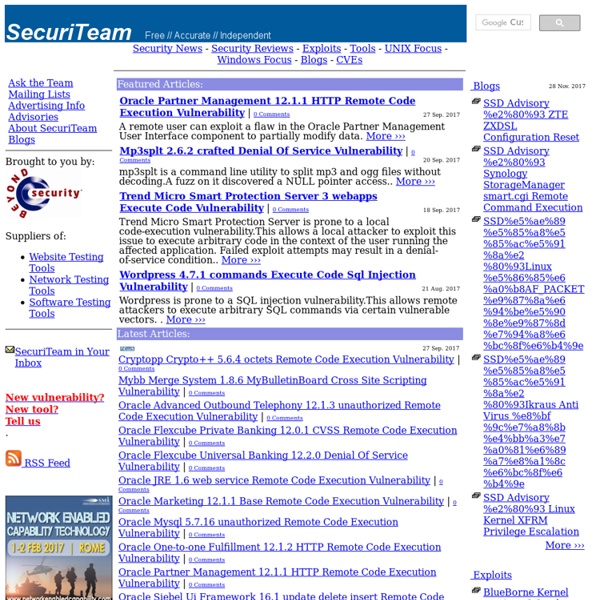SecuriTeam.com
Portail officiel de la sécurité informatique - ANSSI - Républiqu
Hispasec - Seguridad Informática
CLUSIF | Bienvenue
ISECOM - Institute for Security and Open Methodologies
Slashdot (15)
traceroute.org
Whois Lookup & IP | Whois.net
Hushmail – Private Email
Mozilla Thunderbird - Características
Pestañas Si te gusta la navegación por pestañas de Firefox, te encantará manejar el correo con pestañas. El correo con pestañas te permite cargar mensajes en pestañas separadas para que puedas saltar rápidamente entre ellos. Al hacer doble clic o presionar Enter sobre un mensaje hará que se abra en una pestaña nueva. Cuando cierres Thunderbird, las pestañas visibles se guardarán y serán restauradas la próxima vez que abras Thunderbird. Búsqueda La interfaz de búsqueda en Thunderbird contiene herramientas de filtrado y cronología para localizar el mensaje exacto que estás buscando.
The GNU Privacy Guard
Related:
Related:



